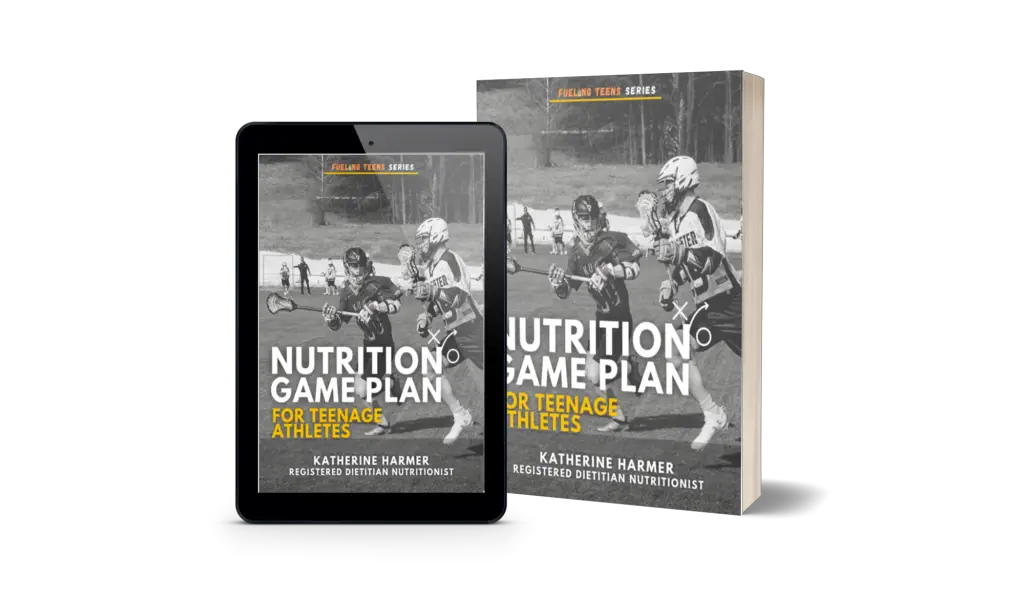Have you seen how much a teenager can eat? Teenagers are growing and developing at an amazing rate, and they need a lot of fuel to give their body the energy and nutrients it needs.
16-year-old teenage boys need to eat about 2,800 calories per day based on several factors, including gender, age, height, and physical activity. Teen boys are often in the middle of a growth spurt and need extra nutritional fuel.
Check out the charts below for calorie recommendations for all teens, tips on what teens should eat, plus a sample menu plan from a registered dietitian nutritionist!
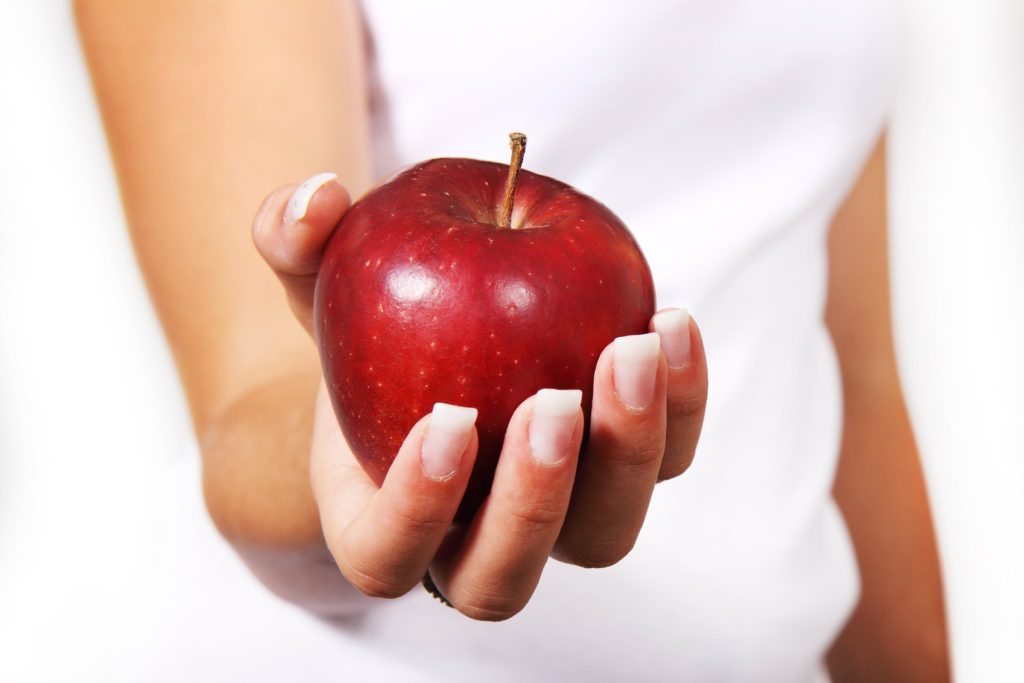
Nutrient Requirements for Teenage Boys
Calories provide energy for our bodies, they help us survive, move, breathe, and perform daily activities like running, laughing, walking, playing sports, as well as using our brains for thinking, studying, and learning.
Calorie needs vary based on several factors: age, gender, height, weight, body composition, physical activity level, and other factors. Additionally, athletes need more calories because they are using a lot more energy through training and competition.
How Many Calories Does a Teenage Boy Need Per Day?
In the teenage years, the body requires more calories than any other time of life. With growth spurts and development, teenage boys need around 2,200-2,800 calories per day, while girls need about 2,000 calories per day. Teen athletes may need additional calories on top of this.
In the teenage years, the body requires more calories than any other time of life. With growth spurts and development, teenage boys need around 2,200-2,800 calories per day, while girls need about 2,000 calories per day. Teen athletes may need additional calories on top of this.
Here are some helpful charts to give you a good idea of calorie needs based on age, gender, and activity level:
Teenage Male Caloric Requirements Per Day:*
| Age | Not Active | Moderately Active | Active |
|---|---|---|---|
| 13 | 2,000 calories | 2,200 calories | 2,600 calories |
| 14-15 | 2,000 –2,200 calories | 2,400 –2,600 calories | 2,800 –3,000 calories |
| 16-18 | 2,400 calories | 2,800 calories | 3,200 calories |
| 19 | 2,600 calories | 2,800 calories | 3,000 calories |
Teenage Female Caloric Requirements Per Day:
| Age | Not Active | Moderately Active | Active |
|---|---|---|---|
| 13 | 1,600 calories | 2,000 calories | 2,200 calories |
| 14-18 | 1,800 calories | 2,000 calories | 2,400 calories |
| 19 | 2,000 calories | 2,200 calories | 2,400 calories |
Not Active= Minimal activity per day.
Moderately Active= 30-40 minutes of physical activity per day.
Active= 40 or more minutes of physical activity per day.
*From The Academy of Nutrition and Dietetics
This is a general recommendation for daily calories for healthy teenagers, individual requirements vary. I hope these charts can help you get a good idea of recommended needs. These calorie levels can be a good place to start, but ideally you will want to experiment to figure out what works best for your individual needs.
Should a Teenager Track Calories? It isn’t recommended for teenagers to regularly count calories, even for overweight teens. Occasionally there may be other concerns that might require food tracking, but a teenager may become obsessive and develop unhealthy relationships with food if they are regularly focused on calories and food amounts.
The best thing a teenager can do to make sure they are eating an appropriate amount is to plan regular meals and snacks throughout the day (3 meals and about 1-3 snacks), and to learn to listen to their hunger and fullness cues. Teens can practice to determine how much to eat to satisfy their hunger without eating too much or too little.
But… it’s still helpful to have an idea of calorie recommendations. Try tracking food and calorie intake for just 3 regular days per month to get an idea of eating habits and places for improvement.
Learn how much food you need!
Based on the chart, an average (moderately active) 16-year-old boy needs an estimated amount of around 2800 calories per day.
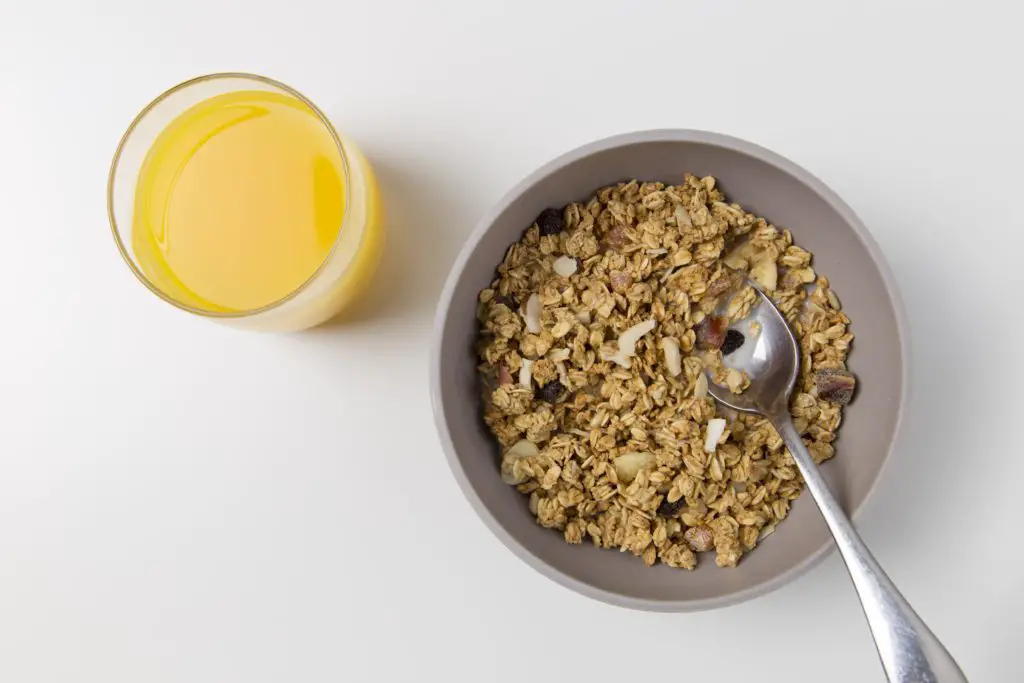
How to eat 2800 calories in a day? Most teenagers need about 3 meals and 1-3 snacks per day to keep up with their nutrient needs. Meals should range from 600-800 calories and snacks from 100-300 calories.
Sample Menu Plan – What 2800 calories looks like in a day:
Breakfast– 1 cup oatmeal made with 1 tablespoon chia seeds and 2 tablespoons peanut butter, plus 1 banana, 1 slice whole wheat toast, and 1 cup of milk (721 calories).
Lunch– hoagie sandwich with veggie toppings, 1/2 cup sugar snap peas, 2 tablespoons ranch, 1 cup grapes, and 1/2 cup pretzels, (755 calories).
Snack– string cheese, 1 cup apple juice, 1 cup veggies, and 1/4 cup hummus (308 calories).
Dinner– 3 burritos with ground turkey, beans, cheese, shredded lettuce, tomatoes/salsa, guacamole, sour cream, and bell peppers (761 calories).
Snack– smoothie popsicles (~250 calories)
Total = 2,795 calories
Also check out my meal plans:
- Meal Plan for Teen Athletes and Active Teens
- FREE Downloadable Meal Plan for Teen Soccer (Football) Players
- Nutrition Game Plan for Teenage Basketball Players
- Nutrition Game Plan for Teenage Football Players
A healthy, balanced diet for a teenager includes:
Have you seen USDA’s food pyramid or ChooseMyPlate before? Children and teens learn about it in school.
It is important for children and teenagers to choose foods that are high in nutrients (vitamins, minerals, fiber) and low in added sugars, salt, and saturated fats. A healthy, balanced diet for teenagers includes fruits and vegetables, whole grains, dairy or dairy alternatives, protein foods, and healthy fats.
- Fruit and Vegetables: 5 or more servings of fruits and vegetables per day. A serving is about the size of your fist or 1 cup.
- Whole Grains and Starchy Foods: whole wheat breads/pasta/crackers, sweet potatoes, corn, brown rice, and oats are all great choices. Choose 6-8 servings per day. A serving is equal to 1 slice of bread, 1/2 cup of cooked pasta/rice/oatmeal).
- Dairy Products: Includes milk, yogurt, cheese, cottage cheese, etc. Choose low-fat dairy options (skim or 1% fat). Choose 2-3 servings per day for strong, healthy bones. Fortified dairy alternatives are also appropriate.
- Protein foods: Choose meat, fish, eggs, beans, lentils. Choose 4-6 servings per day. A serving is equal to 1 ounce of cooked meat, 1 egg, 1/4 cup cooked beans, 1/2 ounce nuts or seeds, or 1 Tablespoon of peanut butter.
- Limited sugar, sodium, and saturated fat: Teens should limit overly- processed foods and food with too much sugar such as candy, cakes, desserts, treats, or sugary drinks like soda. These foods are high in calories, but low in nutrients. They only have a small place in a teenager’s diet and should not be consumed regularly.
Want some more tips for a balanced meal for a 16-year old boy? Keep reading.
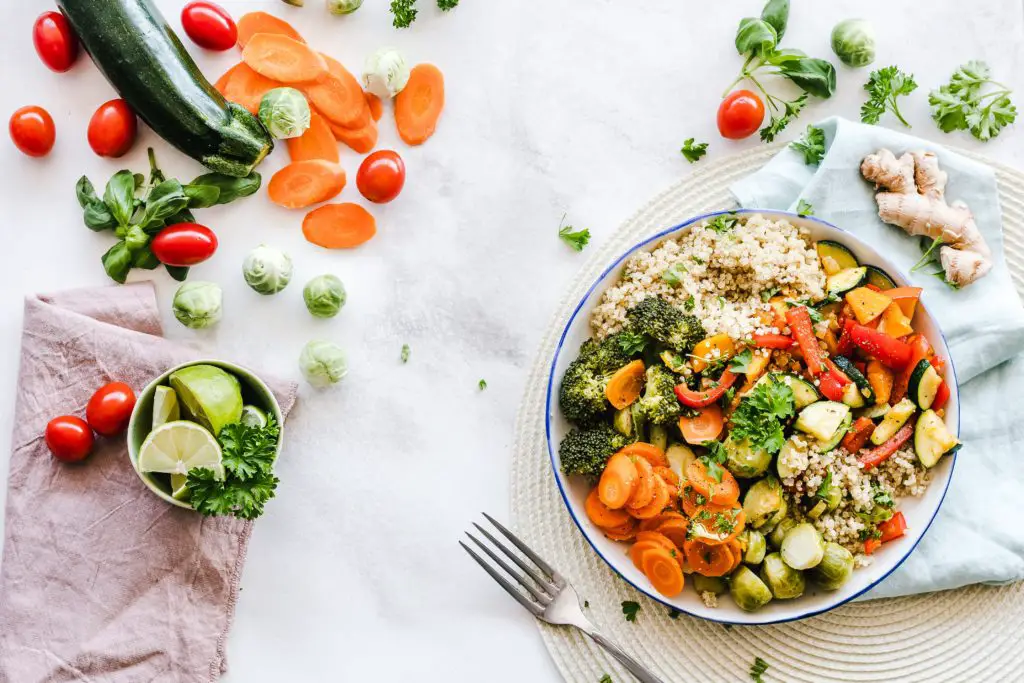
3 Components of a healthy meal for 16-year-old teenagers:
1. Carbohydrates:
Teens need at least 130 grams of carbohydrates per day and these can come from grains, fruits, starchy vegetables, and dairy products. Carbohydrates are the preferred fuel source during physical activity, most teens require a lot more than 130 grams of carbohydrates per day.
45-65% of calories should come from carbohydrates. Carbohydrates contain 4 calories per gram. If your teen requires 2,800 calories per day, they would need 315-455 grams of carbohydrates per day to be in the recommended range.
Choose healthy carbs such as fruits, vegetables, nuts, seeds, legumes, whole grains and low-fat dairy foods. Limit sugary foods, refined grains (white bread/pasta, white rice), sugary beverages, and other foods with added sugars.
These foods provide few nutrients and could contribute to weight gain and obesity. Choose whole foods instead of many overly-processed and packaged foods.
2. Protein:
Protein helps to build and restore muscle and other body tissue, supports your immune system, regulates pH and fluid balance, plays a role in hormones, transports nutrients, provides some energy, and helps with many biochemical reactions.
Teenagers need lots of protein during this crucial time of growth and development. Physically active teens need about 0.45 – 0.6 grams of protein per pound of body weight. Non-athlete teens need about 0.3-0.4 grams of protein per pound of body weight. That might seem like a lot, but studies show that teens regularly eat 3 times the Recommended Dietary Allowance of protein.
Protein is in a lot of foods, and it adds up fast, but it’s still helpful to be aware of high-quality protein sources and make sure your teen is getting enough at each meal and snack.
Animal sources of protein include milk and dairy products, eggs, meat, poultry, fish. Plant sources include nuts, seeds, legumes, oats, quinoa, soy, and more.
Vegetarian teenagers should work with a doctor and a dietitian nutritionist to make sure they are getting enough protein, iron, calcium, zinc, vitamin B12, and other important vitamins and minerals.
3. Nutrients:
Choose a fruit and/or vegetable at every meal and snack to get a variety of important nutrients for your body to function appropriately. You want your meals to fill you up and fuel you to be the healthiest you can be during these important years of growth and development.
Components of a healthy snack for teenagers:
Teenagers need about 1-3 snacks per day. Plan a meal or snack every 2-4 hours. A healthy snack is also focused on carbohydrates, protein, and vitamins/minerals. These will help you stay full and satisfied, have enough energy for the day, and get the nutrients your growing body needs each day.
An appropriate snack should be about 100-300 calories. Don’t forget your water bottle to stay hydrated! Stay away from junk food and the vending machine for snacks; plan ahead and bring some healthy options with you during the day so you don’t get too hungry. Some great options are listed here:
- 1/4 cup hummus with 6 whole wheat crackers and veggies
- 12 oz protein fruit smoothie
- 1 cup Greek yogurt with granola and fruit
- 1 cup low-fat cottage cheese and fruit
- 1/4 cup trail mix
- 1/4 cup almonds and 1 apple
- 1 banana or apple with 1 T peanut butter
- string cheese and 8 whole wheat crackers
- 1.5 cups cereal and 1 cup milk
- 12 oz chocolate milk
- string cheese and an apple
- 1/2 cup pretzels and 1 T peanut butter
- PB&J sandwich
- energy bar like a LARABAR
- 1 cup juice and 2 hard-boiled eggs
- rice cake with 1 T nut butter and banana
- string cheese and 4 oz applesauce
For parents – Is your teen always hungry?
Have you seen how much teenagers can eat? Especially if they are active and involved in sports? They never seem to fill up and you can’t seem to keep them fed, right? Here are some tips on how to deal with a teen who is always hungry. Remember, some teens may need 4,000 calories per day!! That’s double what a lot of adults need.
- Eat foods that are filling. Fiber from food provides a feeling of fullness and gives you important nutrients. Choose half your grains as whole grains. Choose whole-wheat bread, pasta, crackers, tortillas, and brown rice instead of other refined grains. Whole grains and fruits and vegetables can help you feel full and satisfied for a few hours until your next meal or snack. Protein also helps you to feel full, so make sure you are including protein foods at each meal and snack.
- Drink lots of water. Water is the better option instead of soda or juice or energy and sports drinks. They are full of sugar and don’t have many nutrients. Bring an insulated water bottle with you during the day and make it a habit to stay hydrated.
- Always keep healthy, favorite foods on hand. If healthy snacks are easily accessible and ready-to-eat when your teen is hungry, then they are more likely to eat them. Stock the fridge with mini carrots, cut-up veggies and dip, fruit, low-fat cheese, and yogurt. Other healthy choices are nuts and trail mix, dried fruit, whole-grain cereal and crackers, and popcorn.
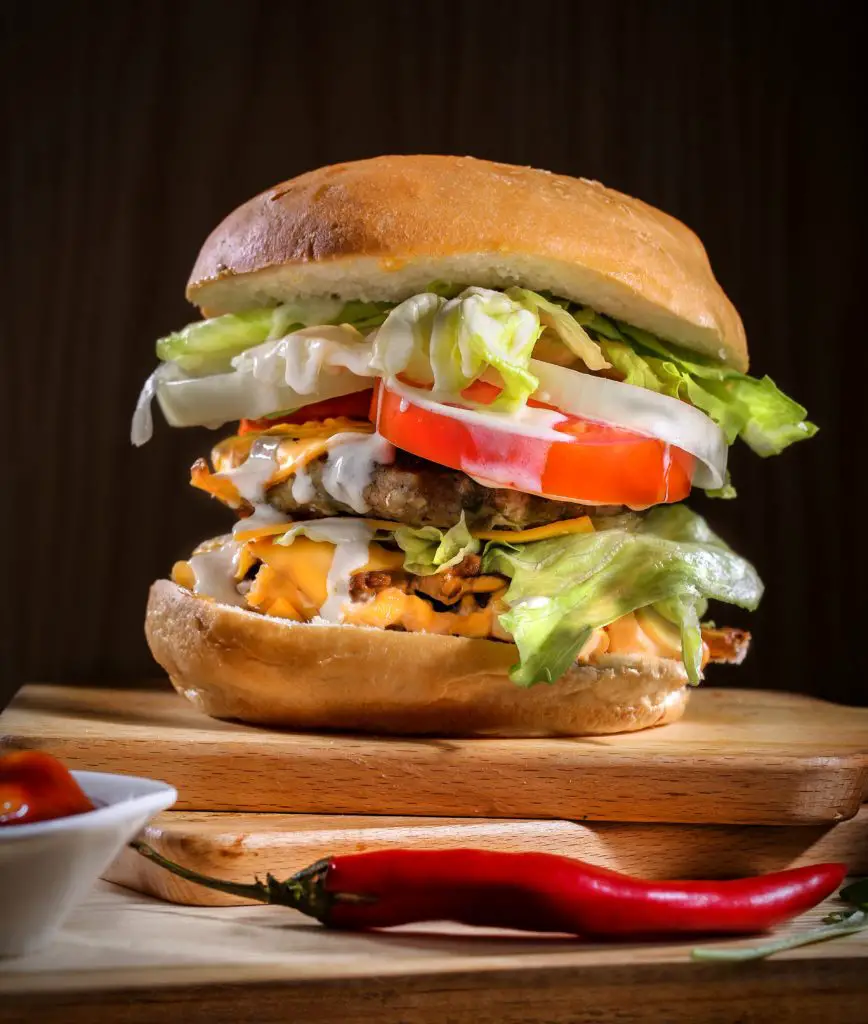
What Parents Can Do So Their Teens Eat Healthier:
Parent’s are the most influential role models for their teens. The best thing parents can do to teach their teens to have a healthy body image is to be a positive example. Here are some suggestions on how to do that:
- Avoid dieting – work on building your own healthy relationship with food, not on restrictive eating. Your teen will see your habits. About 5 percent of teen girls develop eating disorders. Teens can build a healthy relationship with food if they see your good example.
- Eat an overall balanced diet – Focus meals on nutrient-rich foods. Favorite foods are perfectly fine in moderation
- Do not talk negatively about your body around your kids – do not praise or put emphasis on people’s physical appearance
- Talk with your teen about body image – Media portrayal can affect body image, make sure to openly discuss this with your child. Teens and adults come in all shapes and sizes and that’s okay! We don’t all need to be the same size.
- Encourage exercise – Help your teen develop a habit of exercise to be healthy, stronger, and have more energy, not for outward appearance.
Overly 20 percent of teens have an obese BMI. What doesn’t help is growing up with parents who are obsessive about weight, constantly dieting, always talking about “bad” and “good” foods, obsessed with losing a few pounds, and being a bad example of having a strong relationship with food.
If you are concerned about your high schooler’s relationship with food, meet with a registered dietitian nutritionist or a doctor.
Related Questions:
How Many Calories Does a 16-Year-Old Burn in a Day? A moderately active 16-year old teenage girl needs about 2,000 calories per day. A moderately active 16-year old boy needs 2,800 calories per day. They each burn around 200-400 calories per day from physical activity and the rest is needed for daily functions, energy, body processes, growth, etc.
How Much Protein Should a 16-Year-Old Boy Eat? Physically active teens need about 0.45 – 0.6 grams of protein per pound of body weight (multiply weight in pounds by 0.45 or 0.6 to get grams of protein). Non-athlete teens need about 0.3-0.4 grams of protein per pound of body weight. That might seem like a lot, but studies show that teens regularly eat 3 times the Recommended Dietary Allowance of protein.
What Should a 16-Year-Old Boy Eat for Breakfast? A healthy breakfast for a 16-year old boy should be focused on complex carbohydrates, protein, fluid, and healthy fats. Some great ideas include oatmeal, fruit, eggs, avocado toast, or a fruit and veggie smoothie.
Is It Safe for a 16-Year-Old to Drink Protein Shakes? Many protein powders and protein shakes have been shown to contain harmful substances, especially for children and teens. If you choose to drink a protein shake, it needs to be a brand that is safe.
Some of my favorite protein powders and protein shakes include (click to view on Amazon) Naked Whey Grass Fed Whey Protein Powder, Orgain Organic Whey Protein Powder, Organic Valley Milk Protein Shake, or CalNaturale Svelte Organic Protein Drink.
You can also make your own protein shake with whole foods that are just as high in protein. Example: Greek yogurt, chia or flax seeds, frozen fruits and vegetables, milk, and nut butter. Check out my post for more information: Is Whey Protein Safe for Teenage Athletes?
How Can a 16-Year-Old Lose Weight? Focus on eating smarter, not restricting food. An appropriate eating plan will help more than a diet. In some cases of teen obesity, weight loss may be appropriate, but needs to be monitored by a physician and registered dietitian.
Teenagers shouldn’t try to lose weight. It isn’t wise to diet. Teens are at a crucial years of growth and development where restricting calories or nutrients may be harmful. If a teen is overweight, they should work with a physician and a dietitian in order to create a plan to focus on correct foods, be more physically active, and eat an appropriate amount so they can grow into their weight.
Check out some of my other popular nutrition posts for teens:
- FREE Meal Plan for High School Football Players
- Is Whey Protein Safe For Teenage Athletes?
- Best Fruits for Teen Athletes
- Should Football Players Drink Gatorade?
- The Best Pre-Workout Meals and Snacks for a Teenage Athlete
Summary
- Teenagers need a lot of energy and nutrients because they are growing and developing. A 16-year-old teen boy needs around 2,800 calories per day based on gender, age, height, weight, and physical activity.
- Meals and snacks should be focused on complex carbohydrates, protein, and nutrient-rich foods.
- Parents should model appropriate behavior around food, dieting, and weight in order to teach their high schoolers how to have a healthy relationship with food.
See Also:
- Is Intermittent Fasting Safe for Teenagers?
- What is the Best Diet Plan for a 15 Year-Old to Lose Weight?
- Should a Teenager Count Calories?
- How Many Snacks Should a Teenager Eat Per Day?
- How Much Sugar Can a 14-Year Old Have Per Day?
EBooks from Fueling Teens
Need more help with your diet this season? Get help from a registered dietitian nutritionist, check out my newest eBook: Nutrition Game Plan for Teenage Athletes. Includes 28-day meal plan, snack list, meal schedule, supplement tips, and so much more for your best season yet!
Also Available From Fueling Teens:
- FREE Downloadable Meal Plan for Teen Soccer (Football) Players
- Nutrition Game Plan for Teenage Basketball Players
- Nutrition Game Plan for Teenage Football Players
References:
Academy of Nutrition and Dietetics. “How Many Calories Does My Teen Need?” Esther Ellis, MS, RDN, LDN. May 1, 2018.
Academy of Nutrition and Dietetics. “Fueling Your Workout – How Teen Athletes Can Build Muscles With Protein.” Jill Castle, MS, RDN. September 24, 2018.
Fueling Teens is a participant in the Amazon Services LLC Associates Program, an affiliate advertising program designed to provide a means for sites to earn advertising fees by advertising and linking to Amazon.com. We also participate in other affiliate programs which compensate us for referring traffic.

